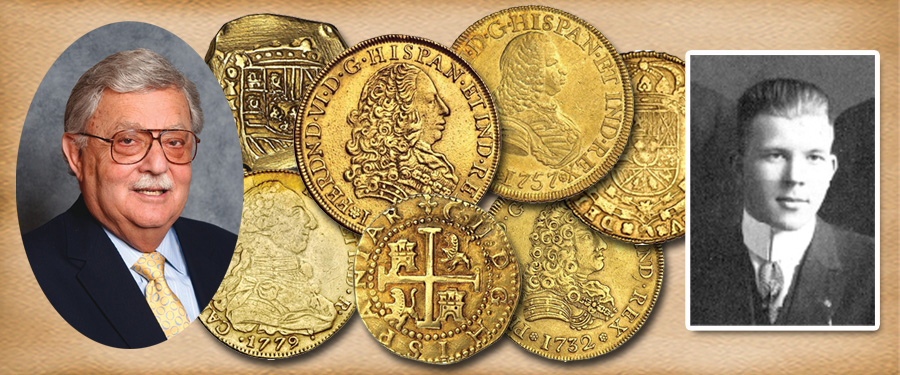
The J.K. Lilly Collection was growing in size each
year. During his customary stop in New York in the spring of 1958 we suggested
that he expand into the Pioneer and Territorial series. He said he would like
to see examples of coins in this specialty to get an idea of what that
expansion would entail.
We had in stock a few Bechtler coins, two octagonal
slugs ($50) of the U.S.
Assay Office, and a few other
California pieces. We had a general discussion with Mr. Lilly about the
California Gold Rush and other gold discoveries in the American West. We also
talked about the coins issued in California, Colorado, Oregon and Utah. Mr.
Lilly knew about the series as he had read about them, making use of his
massive library at Eagle’s Nest that included many volumes about the early
West. He decided that we should start assembling Pioneer and Territorial gold
coins to add to his collection. He left shortly after we had arranged a delivery visit in May.
That spring we reached
out to dealers around the country to see what coins in the Pioneer and
Territorial series were available at fair market prices. We first contacted George Walton, who was both a collector and a dealer. Being from the Carolinas he
traveled as a bank examiner into the hills of Georgia and the Carolinas. He visited numerous banks in those
areas, and purchased from the banks a huge assortment of Bechtler coins. We acquired from him a
number of these of various
denominations and varieties. From
James and Co. in Virginia, we got a few $50 slugs, from F.K. Saab of St. Louis came a few slugs, and Mormon
pieces. From Dan Brown in
Denver we found items made by Clark Gruber and from R. Green of Chicago we were able to acquire a few scarce
California gold pieces. From the F.C.C. Boyd Estate we got Wass, Molitor and
Kellogg round slugs, and we picked up a few other nice pieces at coin shows we attended during that
period. Just like that we had the basis of a collection for Mr. Lilly to examine, study and
acquire. We knew where to look and were able to make some advantageous acquisitions. I took these pieces
with me on my next delivery trip.
My arrival in early May kept to our usual
schedule. I arrived
at Eagle’s Nest, was greeted by Mr.
Lilly and went straight to his
“Hobby House.” We reviewed the coins I brought, the French and
English pieces, other European issues,
and of course the Ancient Greek and Roman coins he had seen in the office.
He admired the artistry of the Ancient
coins, and expressed his amazement
at what was produced under relatively primitive conditions. He asked that I continue to search for Greek and
Roman issues so his collection
would reflect the beginnings of fgold coinage in the Ancient world.
In addition we reviewed the Pioneer and Territorial
coins I had brought with me, and again Mr. Lilly was amazed, considering the
primitive conditions in California and the rest of the West, that such designs
and coins could be created, assayed and weighing correctly. He asked that
we continue to find other pieces as examples of the economic conditions that
developed in the West in its formative days.
In addition, since his collection now exceeded
4,000 different coins of the world (with a virtually complete set of the United
States gold from 1795 to 1933), he felt that we could expand the collection to
the gold coinage of the entire world. Since initially we were only assembling
the largest denominations, (ie: Doubloons), he wanted us to add the lower
denominations which played major roles in the world’s commerce.
After spending the morning reviewing the coins I
had brought with me and placing them in their appropriate cases for storage we
sat down to lunch and we had the chance to discuss his various other hobbies.
Then, after lunch, Mr. Lilly showed me around all the rooms in his “Hobby
House.” What I saw and handled just amazed me even more than on my earlier
visits.
Next time I will describe some of Mr. Lilly’s other
hobbies and how he worked to amass his fabulous collections.





